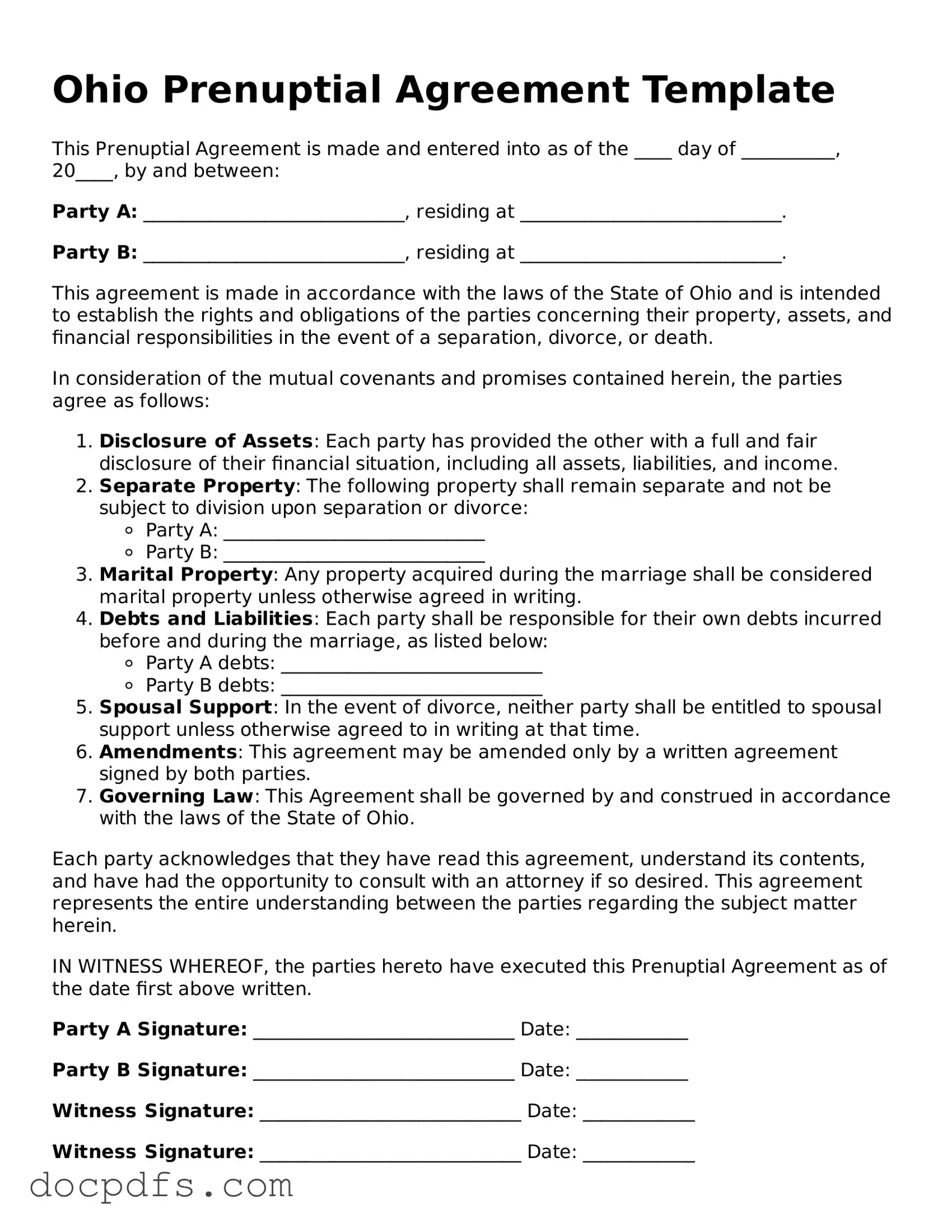In the state of Ohio, a prenuptial agreement serves as a vital tool for couples preparing to tie the knot, allowing them to outline their financial rights and responsibilities before marriage. This legal document can address a variety of important issues, such as the division of property, spousal support, and debt management, ensuring that both parties have a clear understanding of their financial landscape. By discussing these matters openly, couples can foster transparency and reduce potential conflicts in the future. The Ohio prenuptial agreement form typically requires essential information, including the full names of both partners, their respective financial disclosures, and any specific terms that they wish to include. Additionally, it is crucial for both parties to voluntarily agree to the terms without any coercion, and to have the document notarized to enhance its validity. Understanding the nuances of this form can provide couples with peace of mind as they embark on their journey together, knowing that they have taken proactive steps to protect their individual interests.
